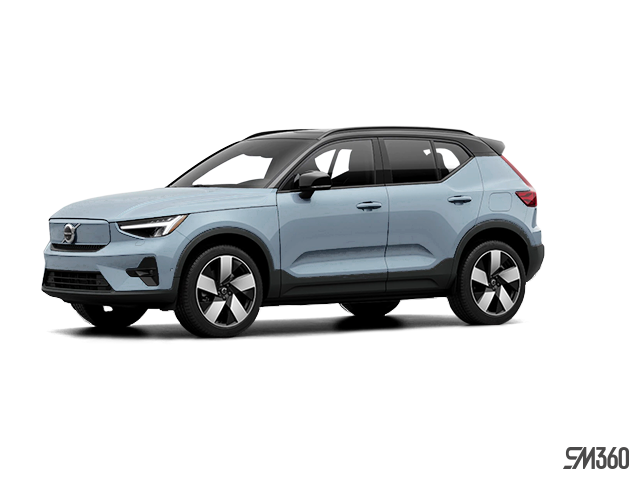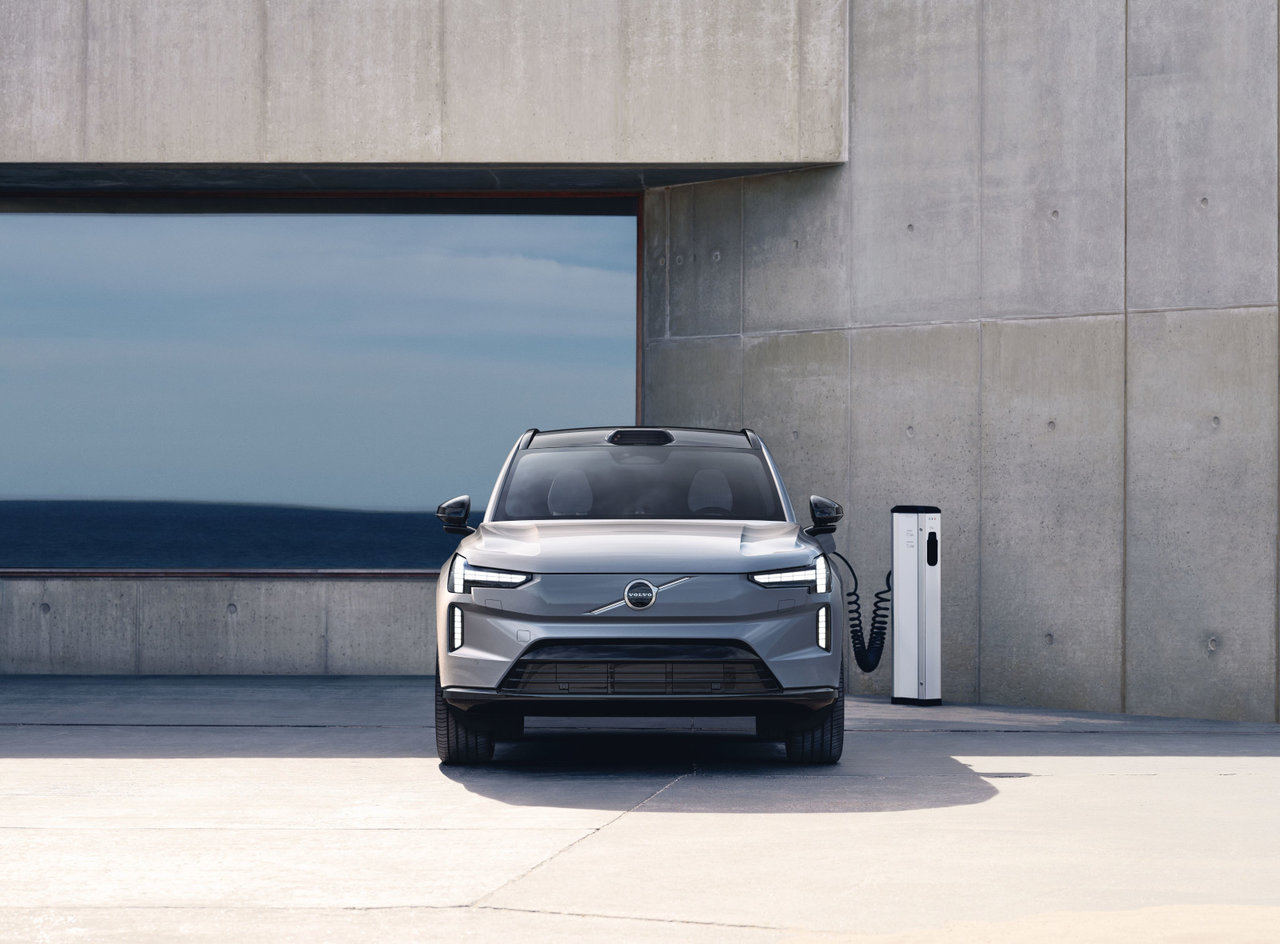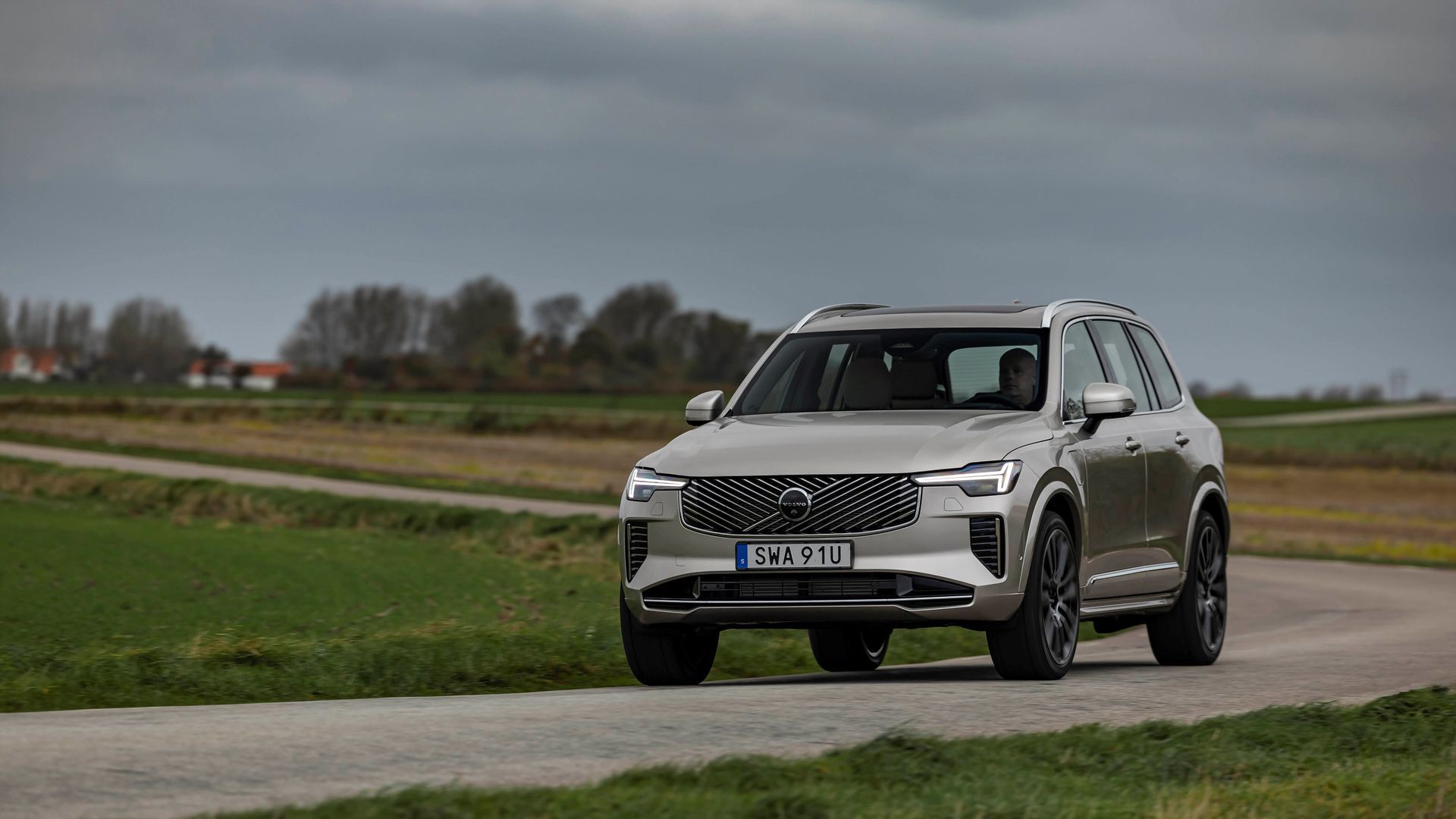
Photo for illustrative purposes only.
Find out moreVolvo Cars Oakville

Range anxiety affects many drivers considering their first electric vehicle purchase. Knowing exactly how far your EV can travel on a single charge helps plan daily commutes, weekend trips, and family vacations with confidence. Volvo's 2025 electric lineup includes four distinct models, each with different range capabilities that serve specific driving needs.
Understanding which Volvo EV delivers the most kilometres per charge helps narrow your choice based on your actual driving patterns around Ontario and beyond. Here's how each model compares for maximum range and real-world usability.
Complete Range Rankings
The 2025 Volvo EV lineup spans from compact urban SUVs to full-size family vehicles, with range varying significantly based on battery size, motor configuration, and wheel options.
|
Ranking |
Model |
Configuration |
NRCAN Range |
|---|---|---|---|
|
1 |
EX90 |
Twin Motor Performance (21" wheels) |
495 km |
|
2 |
EC40 |
Single Motor Extended Range |
480 km |
|
3 |
EX40 |
Single Motor Extended Range |
476 km |
|
4 |
EC40 |
Twin Motor |
431 km |
|
5 |
EX30 |
Single Motor Extended Range (19"/20" wheels) |
420 km |
|
6 |
EX40 |
Twin Motor |
418 km |
|
7 |
EX30 |
Single Motor Extended Range (18" wheels) |
414 km |
|
8 |
EX30 |
Twin Motor Performance |
402 km |
The EX90 leads with 495 kilometres of NRCAN-rated range when equipped with 21-inch wheels, while performance-focused variants like the EX30 Twin Motor sacrifice some range for acceleration capability.
EX90: Maximum Range Leader

The EX90 achieves the longest range through its large 111 kWh battery pack (107 kWh usable capacity). This full-size electric SUV provides enough range for extended road trips while maintaining seven-seat capacity and significant towing capability up to 2,200 kg.
Range varies based on wheel size selection:
The 19 km difference demonstrates how wheel and tire choices affect efficiency. Families prioritizing maximum range should consider the 21-inch wheel option despite slightly different aesthetic appeal.
EC40 and EX40: Mid-Range Options

Both the EC40 and EX40 share identical 82 kWh battery packs but serve different buyer preferences. The EC40 features a coupe-like roofline, while the EX40 offers traditional SUV styling with identical interior space and cargo capacity.
Single Motor Extended Range configurations achieve:
The 4 km difference likely results from minor aerodynamic variations between the models' exterior designs. Both provide excellent range for most Canadian driving needs, including trips from the GTA to cottage country or cross-provincial travel.
Twin Motor all-wheel drive reduces range but adds performance:
The 13 km range difference favors the EC40's aerodynamic profile, though both variants deliver strong all-weather capability for Canadian conditions.
EX30: Compact Efficiency
Despite its small size, the EX30 provides respectable range from a 69 kWh battery pack. This compact SUV targets urban drivers and small families who prioritize efficiency and easy parking over maximum range.
Wheel size affects range more dramatically on the lighter EX30:
The 6 km difference shows how rolling resistance impacts smaller vehicles more significantly than larger, heavier SUVs.
Battery Technology Comparison
Volvo's three battery sizes provide different capabilities:
|
Battery Size |
Models |
Nominal Capacity |
Usable Capacity |
|---|---|---|---|
|
Large |
EX90 |
111 kWh |
107 kWh |
|
Medium |
EX40, EC40 |
82 kWh |
79 kWh |
|
Compact |
EX30 |
69 kWh |
65 kWh |
Larger batteries provide more range but add weight and cost. The medium-sized battery in the EX40/EC40 offers the best balance of range, price, and practicality for most families.
Real-World Range Factors
NRCAN ratings represent controlled testing conditions. Real-world range varies based on several factors that Canadian drivers encounter regularly:
Plan for approximately 80% of NRCAN-rated range during typical Canadian winter conditions when heating systems work harder to maintain cabin comfort.
Charging Speed Considerations
Range becomes less critical when charging speeds allow quick top-ups during travel:
The EX90's faster charging partially offsets longer charging times from its larger battery, while the EX30's smaller battery charges quickly despite lower peak speeds.
Which Range Works for You?
Consider your typical driving patterns:
The highest range doesn't always provide the best value. Match battery capacity to your actual needs rather than buying maximum range you won't use regularly.
Discover which Volvo EV range fits your driving routine with real-world testing on routes you travel regularly.

Photo for illustrative purposes only.
Find out more
3 Reasons Why the 2026 Volvo XC60 Plug-in Hybrid Elevates Family Luxury in Oakville
As families in Oakville seek vehicles that blend Scandinavian design, advanced safety, and efficient performance, the 2026 Volvo XC60 Plug-in...
Read more
2026 Volvo XC60 in 4 Points: Compact SUV Power, Versatility Tailored for Active Lifestyles
The 2026 Volvo XC60 brings a comprehensive refresh to one of the brand's most successful models, combining advanced technology with refined...
Read more
How Volvo's ADAS Boosts Everyday Safety for Oakville Drivers
Picture your morning commute down Trafalgar Road or navigating the busy QEW interchange—traffic slowing unexpectedly, a cyclist appearing in your...
Read more